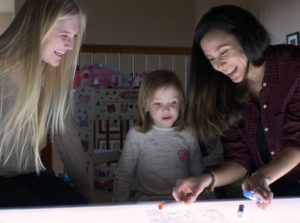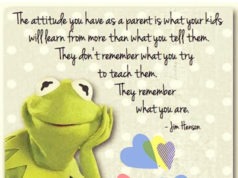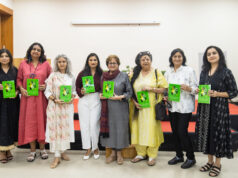Children’s eyes let in more light than adults’ eyes do.
You may think I am speaking metaphorically, perhaps about how open children are to the world and its beauties, or how easily their brains are shaped by what they see and hear. But it turns out that children’s eyes are anatomically slightly different, and they do let in more light, and a new study suggests that exposure to bright light before bedtime can throw their body clocks out of whack.
In an article published this week in the journal Physiological Reports, researchers report on an experiment in which they measured levels of melatonin, the hormone that regulates sleep, in a group of 10 children, ages 3 to 5. First they had the children follow a regular sleep schedule for five days, and checked their saliva several times a day to measure their baseline levels of melatonin. Then, on day six, they turned children’s homes into low-light “caves,” covering the windows with black plastic and swapping in low-wattage light bulbs.
Lameese D. Akacem, an instructor at the University of Colorado, Boulder, who was the lead author on the study, said that the children spent the whole day in the dim light, again with researchers tracking their melatonin levels. Then, the next day, an hour before bedtime, the preschoolers were exposed to bright light for an hour, by playing on a “light table” — a glass-topped surface containing a bright light source.
“We know from a lot of studies done in adults, adolescents, school children, that the body clock is very sensitive to light exposure,” Dr. Akacem said. “Particularly in the evening, it tends to suppress the sleep-promoting hormone melatonin.”
But it had not been studied in preschool age children, and there was reason to believe that they might be even more sensitive.
“We were trying to simulate what would go on at home when you put a child to bed,” said Dr. Monique LeBourgeois, an associate professor of integrative physiology at the University of Colorado, Boulder, and the director of the sleep and development lab; she was the senior author on the study. A child who is resisting being put to bed may come out of the dark bedroom and approach the parents in rooms where lights are on, she said, and “they get blasted with light. Just even a short exposure of bright light may suppress melatonin and shut down that sleep-promoting effect.”
The average bedtime for the children in the study was 8:27 p.m., and in their dim-light “caves,” with no bright light to interfere, the researchers found that the children began secreting melatonin, on average, at 7:47 p.m., marking the beginning of their “biological night.”
And then the next night they played on the light tables. “We found that the bright light exposure suppressed melatonin by almost 90 percent, and the effects persisted even after the kids returned to dim light,” Dr. Akacem said. Fifty minutes after the light was gone, most of the children were still not back to 50 percent of the melatonin levels seen the day before.
Melatonin secretion is usually low during the day, and then rises in the evening, causing the body clock to prepare for sleep. The melatonin comes from the pineal gland, located between the two hemispheres of the brain, which is neurologically connected to body clock central, the suprachiasmatic nucleus in the hypothalamus, which in turn is influenced by how much light gets through to the retina.
The lens is a lot clearer in preschool children,” Dr. Akacem said. “The pupils are larger, which allows more light to hit the retina and a stronger signal to the clock.” The lens, which allows light into the eye, accumulates protein as we get older, which causes a kind of yellowing; by the time we’re in our 40s, our eyes are dimming the light for us a little.
Dr. Judith Owens, the director of sleep medicine at Boston Children’s Hospital, said preschoolers’ “circadian profile and melatonin release is relatively earlier compared to adults.”
“One important takeaway is that parents should avoid having children exposed to very bright light before bedtime,” Dr. Akacem said. This study lays the foundation, she said, for looking in more detail at young children’s sensitivity to light, so that researchers can make more specific practical recommendations to parents.
The same research group is starting a longer, larger study, looking at different light intensities and how they affect children’s body clocks.
And since bedtime resistance and difficulty falling asleep are the primary sleep problems in this age group, she said, it’s worth thinking about how this sensitivity to light may affect children’s behavior, even while further research is being done. Children whose melatonin response has been dampened may look “tired and wired,” Dr. LeBourgeois said. “They are tired, but the clock is not sending the signals to the pineal in a way that would facilitate sleep.”
Many toddlers and preschoolers, for example, do what Dr. LeBourgeois calls “curtain calls,” popping back up again with new requests. That means they’re in and out of the bedroom, and if possible, wherever they are, the light should be dim.
So an hour before bedtime, parents might consider trying for a little of that cavelike atmosphere. Turn off bright overhead lights, use your dimmer switches and try to find an alternative to using the bright lights in the bathroom. “Dimming the light allows melatonin to rise in its natural pattern,” Dr. Akacem said.
“A lot of times parents will ask about night lights,” Dr. Owens said. “My recommendation is to have them low near the floor, you don’t want anything shining directly in the eyes.” She also stressed the importance of a regular consistent bedtime, even on weekends, for children in this age group, and putting them to bed before 9, early enough so that they get all the sleep they need.
Children look at the world through relatively new eyes. Beginning to tease out how light affects their brains should help us understand the behaviors that we see, and appreciate the immediacy of the ways that the brain is affected by its surroundings.
“The bottom line is, this is a very prevalent problem for parents and for preschoolers, and light probably holds the key,” Dr. LeBourgeois said.
Pic courtesy : NYT / e environment, Kidsfreesouls









